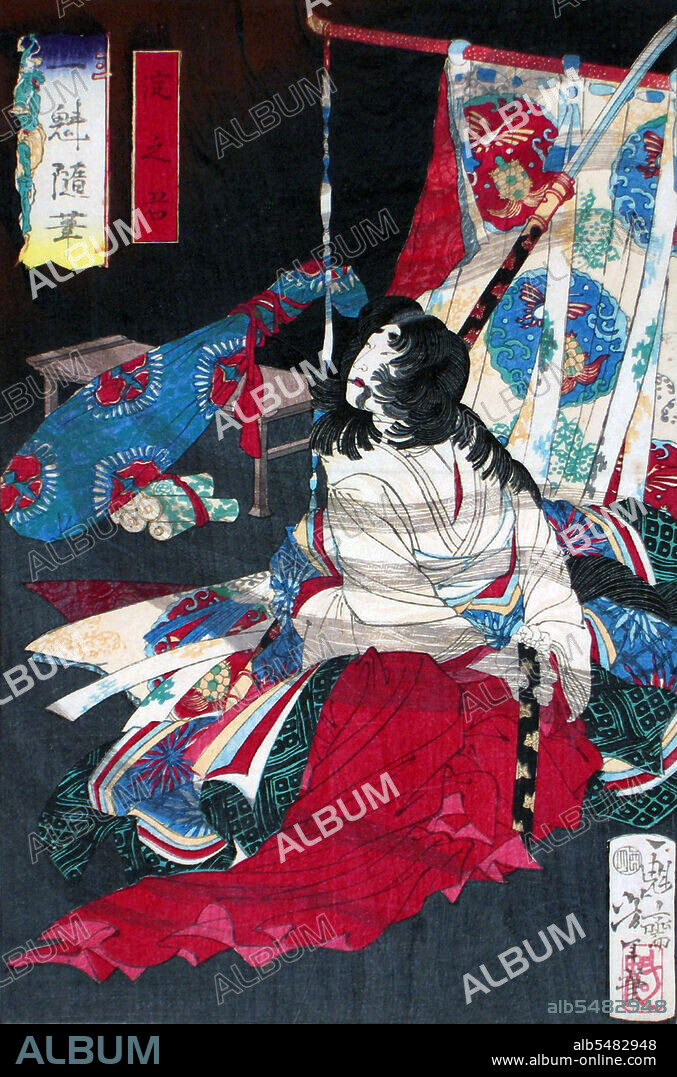alb5482948
Japan: Lady Yodo Dono commits suicide at Osaka Castle in 1615. Castle. Tsukioka Yoshitoshi (1839-1892)

|
Añadir a otro lightbox |
|
Añadir a otro lightbox |



¿Ya tienes cuenta? Iniciar sesión
¿No tienes cuenta? Regístrate
Compra esta imagen.
Selecciona el uso:

Título:
Japan: Lady Yodo Dono commits suicide at Osaka Castle in 1615. Castle. Tsukioka Yoshitoshi (1839-1892)
Descripción:
Ver traducción automática
Yodo-dono (1569 – 1615) was a prominently-placed figure in late-Sengoku period. She was a concubine and second wife of Toyotomi Hideyoshi, who was then the most powerful man in Japan. She also became the mother of his son and successor, Hideyori. Tsukioka Yoshitoshi (1839 – June 9, 1892), also named Taiso Yoshitoshi, was a Japanese artist. He is widely recognized as the last great master of Ukiyo-e, a type of Japanese woodblock printing. He is additionally regarded as one of the form's greatest innovators. His career spanned two eras – the last years of feudal Japan, and the first years of modern Japan following the Meiji Restoration. Like many Japanese, Yoshitoshi was interested in new things from the rest of the world, but over time he became increasingly concerned with the loss of many outstanding aspects of traditional Japanese culture, among them traditional woodblock printing.
Crédito:
Album / Pictures From History/Universal Images Group
Autorizaciones:
Tamaño imagen:
3400 x 5142 px | 50.0 MB
Tamaño impresión:
28.8 x 43.5 cm | 11.3 x 17.1 in (300 dpi)
 Pinterest
Pinterest Twitter
Twitter Facebook
Facebook Copiar enlace
Copiar enlace Email
Email
